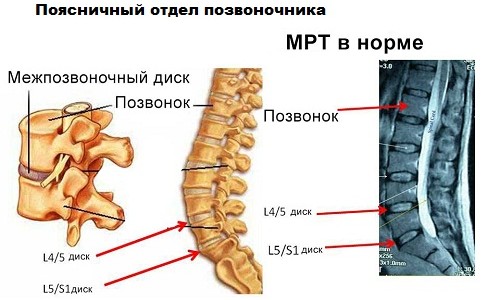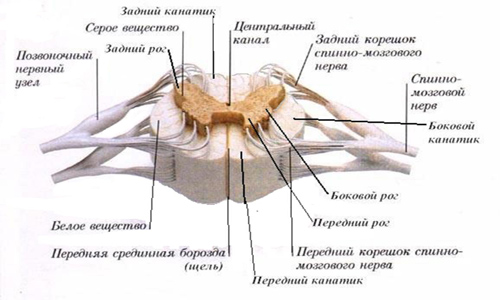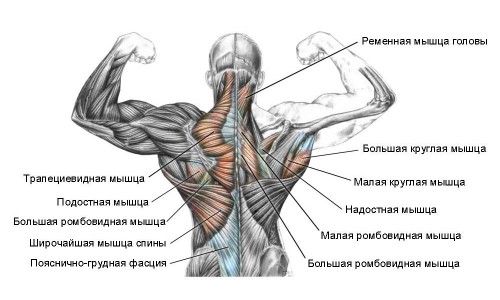Structure, location, connections and numbering of the vertebrae in humans
Inherent in mammals, including man, the structure of the vertebra suggests the presence of features that allow it to withstand significant static and dynamic loads. Human anatomy is such that composing the spinal column, the individual elements form a chain that can withstand the voltage, similar to the one that withstands concrete structure is almost 20 times larger. And unsurprisingly, the purpose of this part of the human body is very peculiar. The vertebrae provide the correct position of the internal organs, form the walls of the pelvic, thoracic and abdominal cavities.

Each vertebra of a person, which is part of the vertebral column, has a hollow hole, in conjunction with the adjacent elements creating a channel protecting located inside the spinal cord from any effects. In the part of the spine there are areas where the width of the vertebrae more clearly. It increases in the direction from the cervical to the sacral spine and is associated with changes in the load experienced by the bone tissue. And bending the spinal column changes along its length, creating a cushioning effect and providing uniform load distribution.
Structure of the spine
The Vertebral column usually consists of 32 to 34 individual vertebrae, between which are the intervertebral discs, prevents bone friction and premature wear. The structure of the vertebrae while there are always a few elements that have their own names in Latin:
- body;
- arc
- paired articular processes (lower and upper, and transverse)
- vertebral foramen
- unpaired spinous process extending from the vertebral arch.

On the arc are the tenderloin (lower and upper) constituting the articulation between adjacent vertebrae of the intervertebral foramen.
There are several types of vertebrae. They are named according to the vertebrae to which they relate. In particular, the cervical vertebrae of a man found in the composition of the vertebral column 7 again differs from the others by the presence of additional holes in the bone transversely extending ridges. Most of the vertebrae in the thoracic region – 12 of them here. The lumbar and sacral divisions consist of 5 vertebrae, and coccygeal parts is from 3 to 5 vertebrae.
Joints of the vertebral column: from cartilage to nerve endings
The main Component of human skeleton the spine performs the main support function for all systems of the body. It forms a number of compounds, allowing others to perform its function.

In particular, we are talking about those areas in which there is a connection of joints and ligaments of the spine with ribs, and the joints of the vertebrae, which they form among themselves. In the end, the intervertebral discs without outside influence not subjected to friction and remain fixed, which means that they can't be worn or to shift themselves. The density of the connections between the vertebrae and discs is such that to separate them, without any mechanical effort, it is not possible.
Despite this obvious connection density of individual elements, we cannot say that the spine element is static. On the contrary, the connection of vertebrae in it rather like a spring, and a number of departments (e.g., cervical or lumbar) has a rather large mobility. But the thoracic and sacral vertebrae mobility due to a number of anatomical factors do not differ.
It is Important to note that the location of the spinal column and the characteristics of its structure provide a solid connection between the spinal cord and the brain, where information exchange and control over the work of all body systems.

Moreover, there are formed signals to the Central nervous system that control bone and muscle apparatus of the human body, and any irregularities in the spine can have a negative impact on the functioning of all other components.
Numbering and the location of the vertebrae
Anatomy of the human body and determines the location of individual vertebrae in the composition of the vertebral column.
each of them has its own number and its own functional role. How is the numbering of the vertebrae, what caused it?

For starters, it should be noted that each individual element has its own name, the ordinal number of the vertebrae in this scenario are indicated by Roman numerals:
- First cervical vertebra, named the Atlas, is the lack of body. In thisis the feature of the structure of the vertebra. Instead there are 2 arc in the front and the back and joints due to which this area of the spinal column is attached on one side to the skull and the second cervical vertebra.
- of the second vertebra has its own name, it is referred to as axial for the presence of a peculiar appendage of the tooth, which provides the rotation of the head.
- Cervical vertebrae from the third to fifth do not have proper names, but the sixth got the name of the speaker, with outstanding rib bone.
- 12 Thoracic vertebrae, they have a more massive bodies and rounded shape of the vertebral foramen. This is important for attachment to the surface of the ribs. These elements are also provided with indentations called costal pits.
- structure of the vertebra of the lumbar spine characterized by the presence of large bodies on the surface are the shoots arranged horizontally, the holes in them are oval shape and looks a bit like beans.
- Vertebrae, located in the sacrum (5), age 18-25 years are fused to form a single bone plate triangular with apex narrowing down.
- the Coccyx, crowning the lower part of the spine is formed of several (3 to 5) vertebrae, has not completed its development.
Thus, the structure of each vertebra separately although it has some similarities with other similar elements, but still different from them, due to his group membership and other external signs.
This defines the functional characteristics of individual components of the spine and its parts, allowing this part of the skeleton of a man to fulfill their purpose most efficiently.













